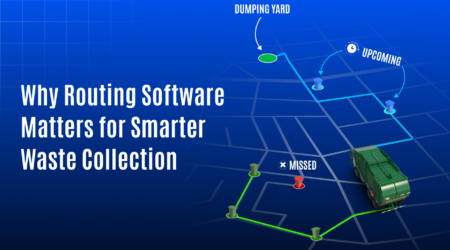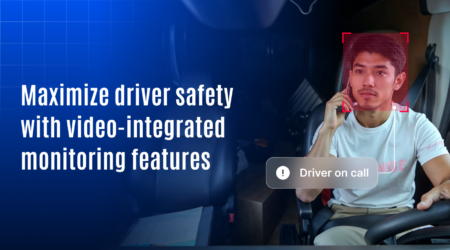A Comprehensive Guide to Choosing the Right Indoor Tracking System
In many businesses today, knowing “where things are” inside your own building is no longer a luxury it’s a necessity. Whether you’re managing a hospital, a warehouse, or a large office complex, keeping track of people, equipment, and inventory in real time can make or break your efficiency.
Did you know that companies lose an average of 20% of their operational time searching for misplaced assets indoors? According to a recent report by Zebra Technologies, 83% of businesses using location-based tracking reported better decision-making and productivity.
So, how do you pick the right indoor tracking system?
If you’re a system integrator or reseller looking to provide a smart, scalable solution for your clients, this guide is for you.
Why indoor tracking systems matter more than ever
Imagine a hospital where a nurse spends 10 minutes searching for a vital medical device. Or a factory where employees spend hours locating tools or assets. These aren’t just isolated incidents they happen daily.
An indoor tracking system helps businesses:
- Know exactly where each person or object is at any time.
- Save time and reduce operational friction.
- Improve safety and compliance.
- Make smarter decisions using real-time data.
And most importantly for integrators and resellers it opens the door to recurring value and long-term customer retention.
Step 1: Understand the client’s environment
Not every building is the same. Before recommending a solution, get clarity on:
- Size and layout of the indoor space
- Number of floors or zones to be monitored
- Types of assets or people to be tracked
- Client goals Do they want security? Efficiency? Safety?
For example, a university campus may prioritize student movement and safety, while a logistics warehouse might focus on pallet tracking and zone productivity.
Tip: Ask your client to map out high-traffic or problem areas. This helps you suggest the most accurate tracking setup.
Step 2: Pick the Right Technology Mix
Indoor tracking systems rely on several technologies like:
- BLE (Bluetooth Low Energy): Ideal for battery-powered tags, great for real-time tracking with low infrastructure cost.
- Wi-Fi: Useful if your client already has a strong Wi-Fi setup, but can be less accurate.
- UWB (Ultra Wideband): Offers centimeter-level precision, best for high-security environments or asset tracking in compact zones.
- RFID or QR Codes: Good for item tagging but not suitable for real-time movement tracking.
- Sensors (motion, temperature, etc.): Add depth to the system by offering behavior or condition data.
As an integrator, you don’t always need to push the most expensive tech. Instead, match the solution to the client’s actual tracking needs and budget.
Step 3: Choose a scalable software platform
Hardware is only half the solution. The software platform is where the real value lies for both your client and you.
Here’s what to look for in a good indoor tracking software:
- Live dashboard with real-time tracking
- Zone-wise or floor-wise monitoring
- Alerts for unauthorized movement or inactivity
- Historical data and analytics
- Easy integration with third-party systems
- Mobile and web access
If you’re a reseller, go for a white-label-ready platform so you can promote your own brand.
Step 4: Prioritize user experience
No one wants to spend hours learning how to use a tracking dashboard. A simple, intuitive interface can make all the difference especially when your client needs multiple team members to use the system daily.
Ask yourself:
- Can someone with no technical background understand the system?
- Is mobile access smooth and responsive?
- Can users set alerts or reports easily?
Remember, the easier the system is to use, the more likely your clients will stick with it and recommend it.
Step 5: Evaluate support and updates
Even the best systems face occasional glitches. Make sure the vendor offers:
- 24/7 technical support
- Easy installation and onboarding help
- Frequent updates and feature upgrades
As an integrator, you’ll want to work with partners who make you look good in front of your clients.
Bonus tip: offer add-on services
An indoor tracking system can open doors for more services:
- Maintenance tracking
- Attendance management
- Asset utilization analysis
- Security audits
Bundling these services adds value to your offering and creates new revenue streams for your business.
Real-world scenario: indoor tracking in a large hospital
Let’s take a simple example.
A 400-bed hospital in Mumbai was facing constant delays because staff couldn’t find critical equipment like wheelchairs and portable ECG machines. After installing a BLE + sensor-based indoor tracking system:
- They reduced equipment search time by 60%
- Emergency response time improved
- Equipment theft or misplacement dropped to near zero
And the best part? The reseller who set this up now earns recurring revenue through platform access and maintenance contracts.
Final thoughts
Choosing the right indoor tracking system isn’t just about the tech it’s about understanding the problem, picking the right tools, and delivering an easy-to-use, valuable solution for your client. For system integrators and resellers, this is a chance to become more than just a service provider. It’s your opportunity to be a trusted digital transformation partner.


